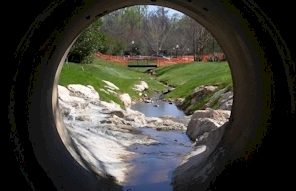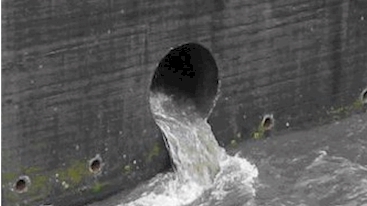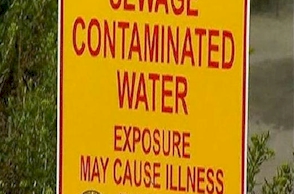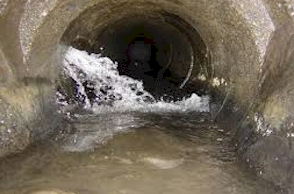Concrete and Urban Development
When we develop the land along the shores of our rivers with sidewalks, parking lots, and roads, we are changing the way water naturally flows. Over areas where the rain would have once soaked into the land, replenishing the groundwater and aquifers, it instead collects on the paved surfaces and gets channeled into storm drains. Large parking lots and sprawling urban areas act like a giant funnel made of concrete and asphalt. With their gently sloping contours, they channel storm water into storm drains and concrete pipes often dumping into a nearby stream.
Storm Water Runoff

“Rivers are dependent on their surrounding lands (known as the watershed) for a consistent supply of clean water. Altering a watershed does many things; one of the most significant is to alter the way storm water soaks into the ground or flows to the local river.”
https://www.americanrivers.org/threats-solutions/clean-water/stormwater-runoff/
Asphalt and Impervious Surfaces
In the environmental sciences, concrete and asphalts are referred to as “impervious” surfaces. The hard surfaces channel water without allowing it to soak in. To make matters worse, the water picks up trash discarded in our streets as well as toxins and by-products from our automobiles, carrying them along and dumping them into the river. What’s missing in this picture?: The entire process of water flowing and filtering through soil.
Storm Water

Storm water can pick up pollutants from a variety of sources. It can pick up fertilizers and pesticides from places like our lawns, farmland, and golf courses.
Pavement Runoff

It runs across our sidewalks, our parking lots, and down our streets. It can pick up discarded trash along the way, as well as contaminants from our automobiles.
Creeks and Rivers

In many cases it dumps directly into a line that empties into a creek or a river.. carrying trash and automobile waste along with it. The resulting bacteria levels can make the water unsafe to fish or swim..
Combined Sewer Lines

In some cases storm water is combined with our household sewage, dumping into the same sewer lines that carry waste away from our homes.
In the cases where it dumps into the same lines as household sewage, heavy downpours of rain can be responsible for high flow bursts, and can exacerbate any leaks. The overall result is an increased flow of sewage escaping into the watershed..
Despite the existence of leaks, the vast majority of sewer water in our community makes its way to the water treatment plants.
Let’s take a look and see what happens to it there..
Imperfections in Water Treatment Plants
What is a River Basin?
A river basin is the land that water flows across or under on its way to a river. Just as a bathtub catches all of the water that falls within its sides, a river basin sends all of the water falling within it to a central river and out to an estuary or to the ocean… Learn more
River Conservation (Introduction)
We’ve collected together some information and interesting resources to create this short introductory guide to river conservation,- including some basic river facts everyone should know… Learn more
Why we’re green
We’re taking the time and making the investment to shoulder more responsibility towards operating a more sustainable, environmentally friendly company not only for the advantage of our community and the planet as a whole but for the advantage of owning and operating a more sustainable business… Learn more

